Introduction
In recent times, tourism has become a potential source of income for many countries, causing greater expectations to fall worldwide due to the increase in tourist attractions. A tourist during his stay contributes financially to various items, such as gastronomy, hotels, among others; this being a stimulus for the growth of the activity at the international level (Tinoco, 2003; Broncano, 2009).
Peru has different tourist destinations, each standing out for a particular attraction. The diversity of climates and lands that the country has makes it desirable for the visit of tourists, since various tourist activities can be developed within the national territory. Some of them are experiential tourism, environmental tourism, and adventure tourism. (Cayo and Apaza, 2017).
More and more companies are joining the market, offering the same existing product or service. These companies coexist in an environment of competitiveness, where customers are more informed and demanding with their service. The tourist will never resume the same service if they had a bad experience. Therefore, it is essential to guarantee a tourist service that seeks to adapt to the demands of the tourist which can guarantee their satisfaction (Gil, Sosa and Quintana, 2002; Chaviano and Aro, 2008).
Adventure tourism is an activity that connects the natural space with adrenaline, being a perfect option for those looking for new emotions. This activity takes place outside urbanized environments, with nature being conducive to its realization. The execution of the activity demands physical effort and much energy. Many existing adventure tourism products respond to the geography of the space and the user profile, with a demand for different user profiles (Malpartida, Barreto, Ninahuaman and Bravo, 2020; Carvache, Carvache, Carvache and Recalde, 2018).
The tour service operators fulfill the function of intermediaries between the tourist and the final tourist good; they are responsible for the execution of the tours and recognition packages of a tourist site, among others (Villavicencio, Pincay, García and Méndez, 2019; Zagarra, Molina and Sandoval, 2010).
In the country, various destinations offer this adventure experience, the district of Lunahuaná being one of the alternatives for this type of activity. It is located in the province of Cañete in the department of Lima (180 km from the capital city) and has a population of 4,923 inhabitants; it was founded as a district on December 8, 1972. This district’s location made its transformation into an attractive place for tourism due to the proximity of the Cañete River, making it possible to practice various adventure sports, including canoeing and kayaking, characteristic sports of the district (Ireijo, 2012).
The experience of the service offered, before, during, and after its acquisition, plays a fundamental role in user satisfaction. A client with a positive or negative experience will be in charge of communicating with the rest of the users; therefore, developing and maintaining a high level of customer satisfaction is an essential part of an organization’s strategies (Sanabria and Pulido, 2012).
Sol y Río is one of the tour service operators located in the Lunahuaná district; it has operations since 1989 and has a favourable location near the banks of the Cañete River. Currently, the company has 10 collaborators, 2 receptionists and 8 guides, and each guide is oriented in a specific adventure sport, thus guaranteeing specialization in each of the services. Presently, the company offers adventure tourism services, having within its portfolio the following adventure sports: canopy, ATV, kayak and canoeing. Its strategic location makes it one of the first options for the realization of these services; however, over the years, the number of companies in the field has increased considerably, this being one of the reasons why it is vital to know the level of customer satisfaction, in this way to be able to identify improvement opportunities for the maintenance and increase of tourists to the company.
The diversity of adventure sports and operators of these services in the district of Lunahuaná makes the offer much more demanding, hence the following research question is formulated: What is the level of customer satisfaction of the company Sol y Rio located in the district of Lunahuaná in the year 2019?
Customer satisfaction is a state of mind, a product of the balance between customer expectations and the service offered by the company. If the result is neutral, no positive emotion arises in the client, while if the result is negative, the client will experience an emotional state of dissatisfaction. On the other hand, if the client perceives a performance more remarkable than his expectations, it will imply pleasant satisfaction; which means for the company greater customer loyalty and promotion of this with other possible customers, being a predominant factor for service operators (Gosso, 2008; Boscán, 2010).
There are various antecedents on the study of the satisfaction level variable, on this, L-Kotler and Armstrong (2012), and Marzo, Ramos and Peiró(2002) define that customer satisfaction depends on the perception of product performance about customer expectations. Companies that have a well-structured marketing department look for a way to always guarantee customer satisfaction. Customer satisfaction is structured by three elements: perceived performance, which refers to the result that the customer perceives that they obtained in the product or service they purchased. Expectations are the hope or illusion that customers must achieve something, and satisfaction levels are when customers experience one of these three levels of satisfaction: dissatisfaction, satisfaction, and complacency.
For Vavra (2006), according to the ISO 9001: 2000 standard, customer satisfaction has the following dimensions: Performance, is the satisfaction of the operational characteristics of the product; Reliability refers to the probability of failure or malfunction of the product in a specific time; Compliance, analyzes whether the design and functionality of the product comply with the pre-established specifications or with the consumer’s expectations, which results from the experience granted by the use of the service in 2 phases: during and after the provision of this, being this part of the consumer experience (Tobías and Mancilla, 2018); Quality of service is defined as speed, courtesy, competence and ease of repair of a product. The quality of services is a primary factor for sound management of clients’ needs and expectations of clients (Bento, Murta, and Sáez-Padilla, 2019); Reputation is the reality of the public image and perception of the company.
There are various antecedents to the study of the variable level of satisfaction. Morales, Arévalo, Padilla, and Bustamante (2018), in the research “Level of Satisfaction and Intention to Repeat the Tourist Visit. the Canton Playas in Ecuador Case”, found that the interviewees expressed a high level of satisfaction and identified the following factors as determining factors for the choice and repetition of the tourist destination: the climate, the susceptibility to the price by the consumer for the decision of the destination, the provision of tourism products and services and the effectiveness of the distribution channels for access to information.
Law & Yip (2010), in their research entitled “A study of satisfaction level of Hong Kong tourists with hot springs hotels and resorts in Guangdong, China” indicate that the level of satisfaction with the quality of service in hot springs, hotels and resorts tourism, was determined by evaluating the dissimilarity between expectations and perceptions of the service of Hong Kong tourists. Research shows that most respondents were satisfied with the service they received and that their perceptions of service quality matched or exceeded their expectations. Significant values imply that the expected service is significantly different from that experienced. Approximately 80% of satisfied tourists indicated that they would recommend these hotels and resorts to their friends and family.
Zheng et al. (2017), in the research entitled “Research on customer satisfaction in Marine Cultural and Sustainable tourism. A case study of Shanghai”, indicate that Chinese marine cultural tourism is still in a stage of development and growth customer satisfaction is uneven. Improving the level of customer satisfaction leads to meeting customer demands in marine cultural tourism and improving the competitiveness of Chinese marine cultural tourism.
Prabhu, Nawzad & Madan (2019), in their work entitled “An empirical study on the satisfaction level of national and international tourists towards natural attractions in Kurdistan,” revealed that the personal factor is the predominant factor that influences the satisfaction of tourists during their stay in the Kurdistan region. In addition, the level of satisfaction depends on various factors: the gender of the travellers, the type of tourism, and the origin of the tourists; and it was not associated with age or education. It was followed by accommodation and food, climate and image, expenses, and facilities.
Cayo and Arcaya (2013), in their research “Degree of satisfaction of tourist services in the city of Puno 2011 – Peru”, found that tourists consider tourist places and attractions to be the predominant aspects to feel satisfied with the trip made; the hygiene of the accommodation being an essential aspect for tourists. On the other hand, tourists feel widely satisfied with international food; they consider the tourist guides’ knowledge about tourist attractions necessary.
The research objective is to identify the level of customer satisfaction of the Sol y Río tourist operator located in the Lunahuaná district during 2019. The specific objectives set are to identify the level of performance, the level of reliability, the level of compliance, and the level of reputation perceived by the clients of the Sol y Río company during 2019.
This research seeks to contribute to the maintenance and increase of users of the tourist services issued by the Sol y Río company. This information is vital to find opportunities for improvement that guarantee the satisfaction and recommendation of its tourist services to new users; it also seeks to contribute to the academic community as a reference for the development of new research on the variable level of satisfaction in the tourism sector of the district of Lunahuaná.
Method
It is quantitative research because statistics were used to present the results, which means the collection and analysis of data from the Sol y Río company were based on numerical measurement: counting. It was verified that it is descriptive in scope because a group of people was characterized to establish the variables of the level of customer satisfaction in the company. Likewise, it is of non-experimental design because the study variable was not intentionally manipulated; only current information was collected from the established place as it occurs in its natural context to analyze it. Finally, it is of a cross-sectional type because the data collection occurred in a unique time, where its purpose was to describe the variables and analyze their incidence and interrelation at a given moment of the research.
The population was made up of the 3,000 monthly clients that the company Sol y Río receives on average, a figure that was provided through a personal interview with the General Manager, Mr. Yvanov Calderon Flores, who referred to the visitor records that they are prepared on a daily and monthly basis to support this figure during 2019.
Likewise, probabilistic sampling was used by the simple random sampling method where the formula (sample calculations) was applied consisting of a population of 3000 clients, a confidence level of 1.96, a margin of error 0.05, probability of failure 0.5, probability of success 0.5, resulting in sample 340.
As detailed in the previous paragraph, the sample consisted of 340 clients of Sol y Río chosen randomly. The inclusion criteria were the service’s use and the fulfillment of the age of the majority. On the other hand, the exclusion criteria were non-use of the service and non-compliance with the age of the majority.
The data collection technique used in the research was the survey, using the questionnaire as an instrument for data collection. It consisted of 25 closed questions addressed to the users of the services of the Sol y Rio company in the Lunahuaná district in 2019, using the Likert measurement scale.
The results had a Cronbach’s Alpha of 0.834, which is why it is established that the instrument was reliable for data processing. Therefore, the measurements are stable and consistent. The validity of the questionnaire was determined by experts, having as criteria for approval the relevance and adequacy of the questions to collect information.
The survey for the data collection was applied at the exit front of the facilities of the Sol y Río company. One of the criteria for the survey application was the end of the service by the user. Part of the process was approaching the user with the physical survey, requesting their permission, and asking the questionnaire questions.
The data analysis was carried out in the SPSS version 24 program, where the information collected for the variable level of customer satisfaction was entered; subsequently, the descriptive statistical tables were analyzed (Alea, 2001).
Prior to collecting data from the Sol y Río company users, the authorization of Mr. Yvanov Calderon Flores, general manager of the company, was requested, who through an interview gave his approval to carry out the surveys within and outside its facilities without the restriction of hours. On the other hand, respect was a fundamental criterion for this activity, both for users and the company.
Results
The variable customer satisfaction was described by the dimensions of performance, reliability, compliance, quality of service, and reputation.
Demographic data
Table 1: Profile of the survey respondents. The variable customer satisfaction was described by the dimensions of performance, reliability, compliance, quality of service, and reputation.
Demographic data
Table 1: Profile of respondents
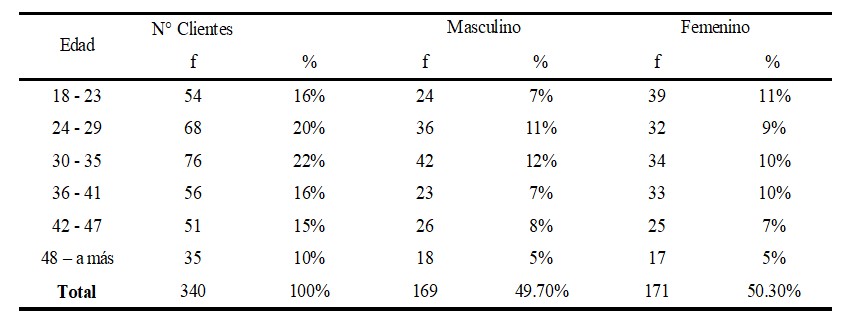
In Table 1, the results of the survey respondents show 22% of customers are 30 to 41 years, 20% are 24 to 29 years, followed by 16% of customers in the age range of 18 to 23 and the same proportion of 36 to 41 years. On the other hand, 49.7% of the clients are women, and the other 50.3% are men.
Regarding the performance dimension
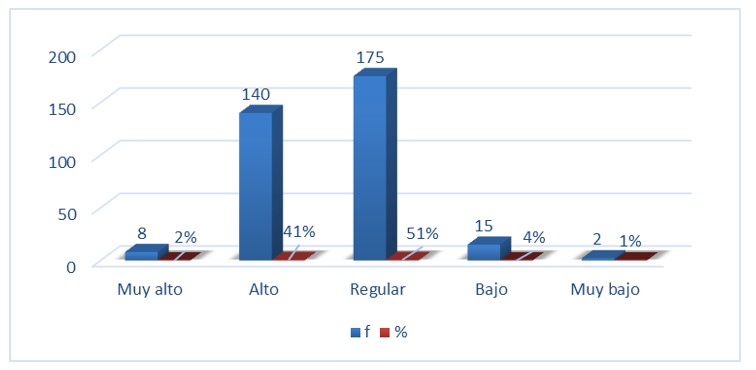
Fig 1. Results of the performance dimension
In figure 1, it can be observed that 50% of the clients perceive the level of performance of the Sol y Rio company as fair, 35% of the clients as high, 10% of the clients as low and only 5% of customers perceive the level of performance as high. These results are due to the fact that clients said that sometimes they feel satisfied with the tour service provided by the company, sometimes they feel satisfied with the treatment offered by the company’s general staff and the service that leaves everyone less satisfied is the Canopy and Rappel, probably because these sports require more physical dexterity than other sports.
Regarding the reliability dimension
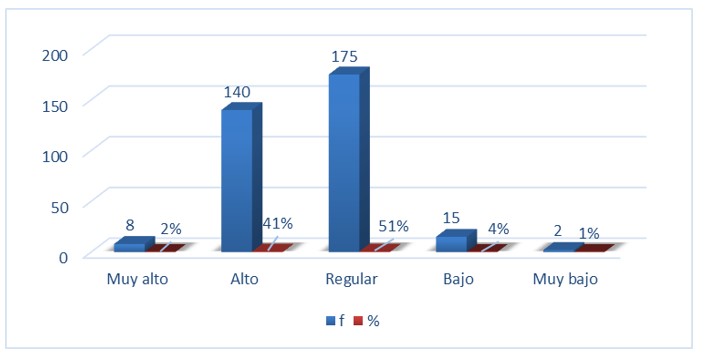
Fig 2. Results of the reliability dimension
Figure 2 shows the results for the level of reliability of the company Sol y Río, where it was obtained that 51% of customers perceive it as regular, 41% as high and 4% as low; it is because the clients responded
that when they have a problem about their order, the company almost always solves it immediately, with the company’s collaborators who mainly provide immediate attention.
Regarding the conformity dimension
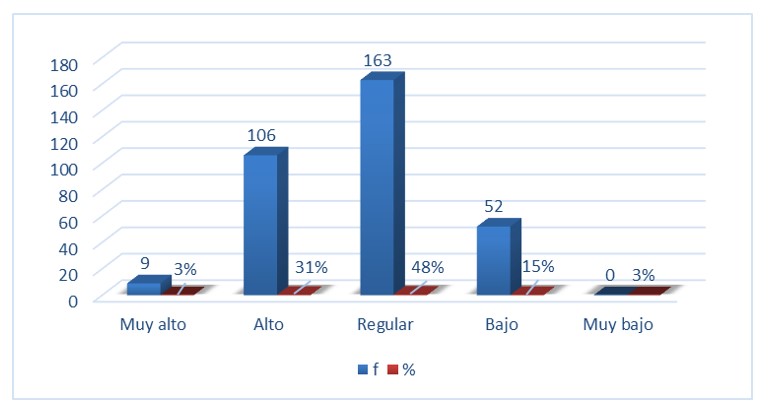
Fig 3. Results of the conformity dimension
In figure 3, 48% of the clients perceive the compliance of the Sol y Río company as an average level, while 31% as high, 15% as low, 3% as very high, and 3% as very low. Almost always, customers’ perception
after using the services is according to what they expected; most of the company keeps the promises made. On the other hand, it is regular because the clients responded that the company sometimes offers the right price.
Regarding the quality-of-service dimension
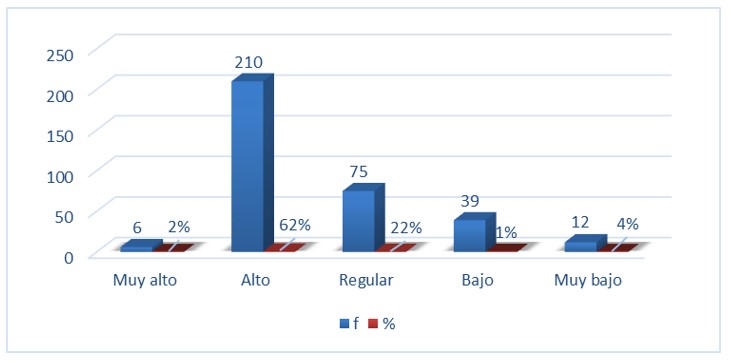
Fig 4. Results of the quality-of-service dimension
In figure 4, results are observed for the dimension quality of service of the company Sol y Río, where 62% of the clients think that the quality of service in the company is high, while only 22% of the customers responded that the level the quality of services is average. Customers responded that almost always the staff who attended them was polite, respectful, and friendly; collaborators almost always show interest in providing adequate information about the services; the staff almost always provided good care.
Regarding the reputation dimension
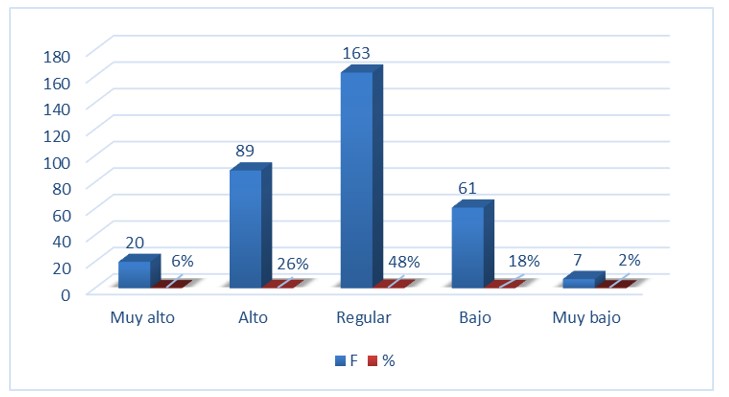
Fig 5. Results of the reputation dimension
Figure 5 shows the results of the last dimension of the study in the Sol y Río company, where 48% of the clients mention that the company’s reputation level is regular, 26% of the clients perceived it as high, and 18% as low. Clients sometimes received recommendations from neighbours or relatives to attend this company; sometimes the client received positive opinions about the company’s quality of service, this is because in recent months the packages offered or the company has improved services
Discussion
According to the findings, the level of satisfaction with the service provided by the tour operator Sol y Río is regular for 43.9% of the clients, showing the need to improve for better service delivery. This result agrees with Pérez et al. (2015); Anaya, Anaya, and Gemar (2021); Rajesh (2013), and Chi & Qu (2008), who found that to obtain a high level of satisfaction, attention must be paid to the attributes of the service in this way to guarantee a high level of satisfaction in users. On the other hand, the result differs from Pasquotto et al. (2012), who obtained in their research “Determinant Elements of Tourist Services Consumer Satisfaction” that the average satisfaction is high.
Regarding the fact that the performance dimension about the service provided by the company is regular (50%), the satisfaction level results from comparing the perceived performance of a product or service with its expectations. This result coincides with the results obtained in the investigation by Morales et al. (2018), where the provision of the product was found as a key to the repetition of the tourist service or product, being a determining element of customer satisfaction.
Regarding the reliability dimension about the service provided by the company, it is regular (51%). This result is supported by the research of Bollet et al. (2018), who found average reliability about customer satisfaction, and in turn, this would be related to customer satisfaction.
The quality-of-service dimension was high for 62% of the respondents, so it is accepted in the market and would be linked to customer satisfaction as one of the dimensions with the highest positive rating. The result coincides with Bollet et al. (2018) and Moreno and Moreno (2016), who confirm a direct and significant relationship between service quality and customer satisfaction. Law & Yip (2010) They also indicate that the quality of the service is measured between the expectations and perceptions of the service received by the clients, so that the clients will feel satisfied if the service they perceive exceeds their expectations.
Regarding the reputation dimension, it was found that only 26% of the clients perceive the reputation of the company Sol y Río as high. This result is related to those obtained by Setiawan & Sayuti (2017) in their research on an Agency of Tourism in Indonesia where they conclude that the corporate image positively affects consumer satisfaction.
Conclusions
The level of satisfaction with the service provided by the Sol y Río company is high for 39% of customers and regular for 43.9%; a situation that is shown with the frequent return of customers, but it is not manifested in the favourable opinions of the service in the media.
Following this, it is concluded that the level of performance with the service provided by the Sol y Río company is high for 35% of customers, while for 50% of customers it is regular since customers feel a greater demand for Canopy and Rappel services due to the effort they require. On the other hand, it is concluded that the level of reliability about the service provided by the Sol y Río company is high for 41% of the clients and for 51% it is regular since the attention provided is immediate and the staff is always ready to answer customer questions as soon as possible. Regarding the level of compliance with the service provided by the Sol y Río company, it is concluded that this is high for 31% of customers; while for 48%, it is regular and is low for 15%. These results are because the company always promises a package tour with not fully provided activities. Likewise, the quality of care with the service provided by the Sol y Río company is high for 62% of the clients, while for 22% of the clients, it is regular, and this is due to the politeness, respect, and kindness that the staff provides. Finally, it is concluded that the reputation about the service provided by the company is regular for 48% of the clients, for 26% of the clients it is high and low for 18%, since the company’s recognition is due to recommendations from neighbours and relatives.
(adsbygoogle = window.adsbygoogle || []).push({});
References
- Anaya-Aguilar, R., Gemar, G., & Anaya-Aguilar, C. (2021). Factores asociados a la satisfacción de los turistas de spa [Factors associated with the satisfaction of spa tourists]. Matemáticas, 9(4), 332.perspectivas en turismo, 21(3), 646-662.
- Bento, P., Murta, L., & Sáez-Padilla, J. (2019). La calidad de los servicios de las empresas de turismo activo en Portugal [The quality of the services of active tourism companies in Portugal]. Cuadernos de Turismo, (44), 27-41.
- Bollet, F., Oyola, S., & Ferrari, F. (2018). La calidad de servicio y la satisfacción del cliente en la dirección regional de comercio exterior y turismo, Pucallpa, 2018 [The quality of service and customer satisfaction in foreign trade and tourism regional directions, Pucallpa, 2018]. 75Cultura Viva Amazónica – Revista de Investigación Científica, 75-81.
- Broncano, S. G., & Andrés, M. R. (2009). El factor humano en los sistemas de gestión de calidad del servicio: un cambio de cultura en las empresas turísticas. Cuadernos de turismo, (23), 129-148.
- Boscán, J., Guanipa, X., & Álvarez, R. (2010). Niveles de satisfacción del consumidor de los servicios turísticos del municipio Falcón, península de Paraguaná, estado Falcón, Venezuela. Multiciencias, 10(3), 300-307.
- Cayo Velásquez, N. E., & Apaza Tarqui, A. (2017). Evaluación de la ciudad de Puno como destino turístico-Perú. Comuni@ cción, 8(2), 116-124.
- Cayo, N., & Arcaya, L. (2013). Grado de satisfacción de los servicios turísticos en la ciudad de Puno 2011 [Degree of satisfaction with tourist services in the city of Puno 2011] – Perú. Revista de Investigación en Comunicación y Desarrollo, 28-37.
- Carvache-Franco, W., Carvache-Franco, M., Carvache-Franco, O., & Recalde-Lino, X. (2018). Preferencias para el turismo de aventura en la elaboración de un paquete turístico: Caso Santa Elena, Ecuador. Revista interamericana de ambiente y turismo, 14(1), 43-51.
- Gil, S., Sosa, D., & Quintana, T. (2002). Análisis de la satisfacción del turista de paquetes turísticos respecto a las actividades de ocio en el destino: El caso de República Dominicana [Analysis of tourist satisfaction of package tours with leisure activities in the destination: The case of the Dominican Republic]. Cuadernos de Turismo, (9), 67-84.
- Gosso, F. (2008). Hiper satisfaccion del cliente [Hyper customer satisfaction]. México: Panorama editorial.
- Ireijo, N. (2012). Lunahuaná, un espacio turístico rural [Lunahuana, a rural tourist área]. Turismo y Patrimonio, (7), 81-88
- Ndp, M. (2019, August 1). Lima 2019: Cañete espera recibir 20,000 turistas por competencias de Panamericanos [Lima 2019:Cañete expects to receive 20,000 tourists for Pan American competitions]. Andina – Agencia Peruana de Noticias. https://andina.pe/agencia/noticia-lima-2019-canete-espera-recibir-20000-turistas-competencias-panamericanos-760901.aspx
- Kotler, P., & Armstrong, G. (2012). Marketing (14th). México: Pearson Educación de Mexico, S.A. de C.V.
- Law, R., & Yip, R. (2010). A study of satisfaction level of Hong Kong tourists with hot springs hotels and resorts in Guangdong, China. Hospitality Review, 83-107.
- Malpartida, J., Barreto, C., Ninahuaman, S., & Bravo, V. (2021). Tourist conditions for the development of adventure tourism in a location of Huanuco, Peru. Journal of Tourism and Heritage Research, 4(1), 37-48.
- Marzo, J., Tur, V., Ramos, J., & Peiró, J. (2002). La satisfacción del usuario desde el modelo de la confirmación de expectativas: respuesta a algunos interrogantes [User satisfaction from the expectations confirmation model: an answer to some questions]. Psicothema, 14(4), 765-770.
- Morales, J. R., Arévalo, D. X., Padilla, C. P., & Bustamante, M. A. (2018). Nivel de satisfacción percibido e intención de repetir visita turística: Caso playas–Ecuador.
- Moreno, M., & Moreno, M. (2016). Satisfacción del usuario y calidad del servicio en alojamientos turísticos del estado Mérida, Venezuela [User satisfaction and quality of service in tourist accommodation in Mérida, Venezuela]. Revista de Ciencias Sociales (Ve), 22(2), 111-131.
- Pérez-Campdesuñer, R., Martínez-Vivar, R., Noda-Hernández, M., & de Miguel-Guzmán, M. (2015). La satisfacción del cliente, influencia en la lealtad. Análisis del destino Holguín [Customer satisfaction influences loyalty—analysis of the destination: Holguín.]. Ciencias Holguín, 21(3), 1-17.
- Prabhu, M., Nawzad, N., & Madan, G. (2019). An empirical study on the satisfaction level of national and international tourists towards natural attractions in Kurdistan. African Journal of Hospitality, Tourism, and Leisure, 1-8.
- Sanabria, M. L. B., & Pulido, L. H. O. (2012) “Competencias en servicio al cliente y efectividad en solución de problemas. Sus características en el sector turismo”. Estudios y perspectivas en turismo, 21(3), 646-662.
- Setiawan, H., & Sayuti, A. J. (2017). Effects of service quality, customer trust and corporate image on customer satisfaction and loyalty: An assessment of travel agencies customer in South Sumatra Indonesia”, IOSR Journal of Business and Management,19(5), 31-40.
- Tobías, L. N. N., & Mancilla, J. J. (2018). Análisis comparativo de modelos de evaluación de calidad en el servicio a partir de sus dimensiones y su relación con la satisfacción del cliente [Comparative analysis of service quality evaluation models based on their dimensions and relationship with customer satisfaction].
- Tinoco, O. (2003). Los impactos del turismo en el Perú [The impacts of tourism in Peru]. Industrial Data, 6(1), 47-60. (2)
- Vavra, T. (2002). Cómo medir la satisfacción del cliente según la ISO 9001:2000 [How to measure customer satisfaction according to ISO 9001:2000]. (2nd ed.). Madrid, España: Fundación Confemetal
- Villavicencio, L. C. M., Pincay, D. E. Á., García, J. S. C., & Menéndez, C. A. M. (2019). Operadoras turísticas y su influencia en el desarrollo socioeconómico [Tour operators and their influence on socio-economic development]. Cienciamatria,6(10), 399-413.
- Zarraga L., Molina V., & Sandoval, E. (2010). La Satisfacción De Los Empleados De Las Operadoras Turísticas En La Ciudad De Cancún: Un Estudio Para Incrementar Su Competitividad” [The Satisfaction of the Employees of the Tour Operators in the City of Cancun: A Study to Increase Their Competitiveness], Revista Internacional Administración & Finanzas, 3(1), 1-13.
- Zheng, Y., Wang, J., Tsai, S., Li, G., Wang, J., & Zhou, J. (2017). Research on customer satisfaction in Marine Cultural and Sustainable Tourism. A case study of Shanghai. Sustainability, 921-927.








